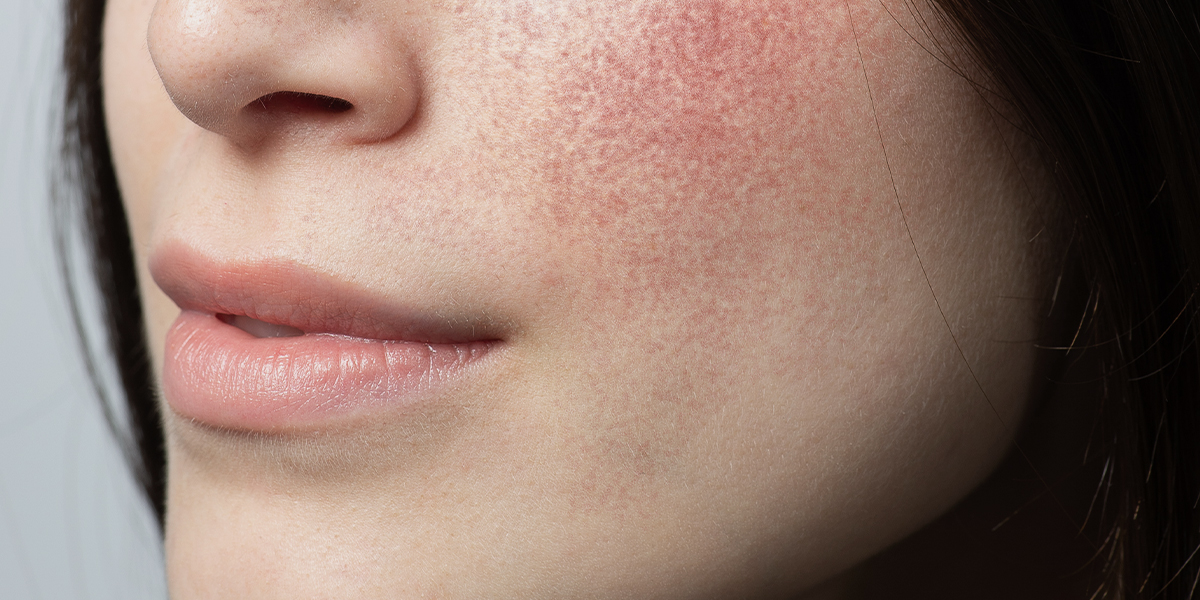Rosacea is not curable but we have the tools to treat it and help you live confidently.
If you have persistent or recurrent redness on your face, an appearance of tiny superficial blood vessels on your cheeks and forehead, or dry, bloodshot eyes, you could have rosacea.5
Rosacea is a chronic inflammatory disorder affecting the skin that occurs in about 13 million Americans.1,2 This typically occurs between ages 30 and 50 in fair skinned people of northern and eastern European origin. Early rosacea manifests as diffuse background erythema (temporary redness) and flushing. In later stages, the vascular component is more prominent, with the development of telangiectasia on the nose, nasolabial folds, cheeks, glabella, and chin. Acne type symptoms such as papules and pustules can emerge in the same distribution. More common in women, rosacea may be more severe in men, in whom large inflammatory nodules and soft-tissue hypertrophy may be disfiguring. Ocular rosacea, including erythema and telangiectasia (small veins), is seen in over half of rosacea patients. 3 Rosacea doesn’t seem to affect other parts of the body and are more common in lighter skin types.
The best way to treat this
The pulsed-dye laser (Vbeam) benefits from a long history (15+ years) of safety and success in the treatment of vascular lesions and rosacea symptoms. An abundance of articles in the dermatology and plastic surgery literature corroborates the wide range of potential treatment course for patients.4
In a recent study, it was observed that greater than 80% improvement was seen in all 25 patients treated. There were no side effects, such as bruising noted in any of these patients. Posttreatment redness and swelling were noticeable in some patients and always resolved within a few hours. 3
Surface vascularity in rosacea is minimally improved by medications. Pulsed-dye laser treatment remains the gold standard for treatment of redness, telangiectasia, and transient flushing.
That being said, pulsed-dye lasers, such as the Vbeam, provides a dramatic new tool, which involves less downtime and can allow effective treatments without bruising for some patients with rosacea. For these individuals, who previously avoided laser therapy, the Vbeam can be life altering. 3





